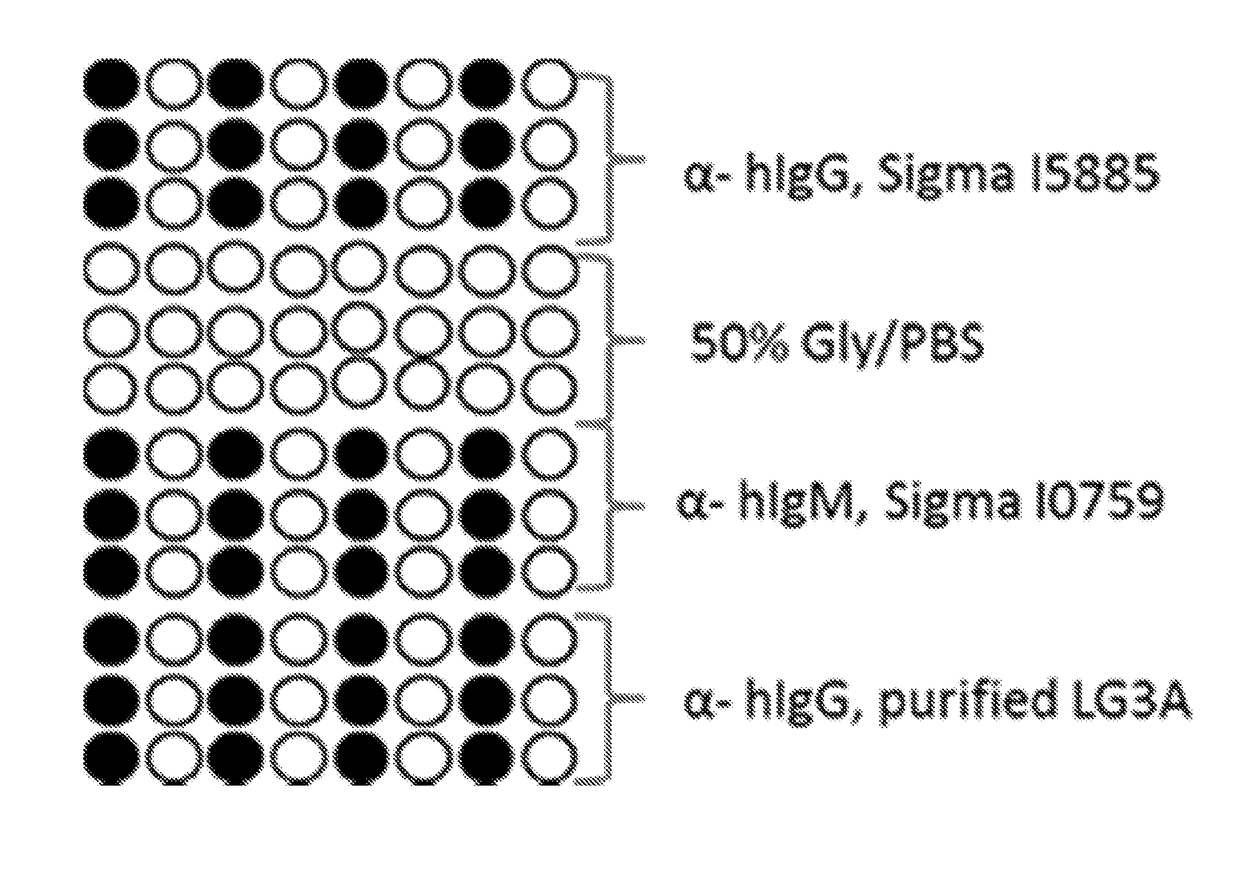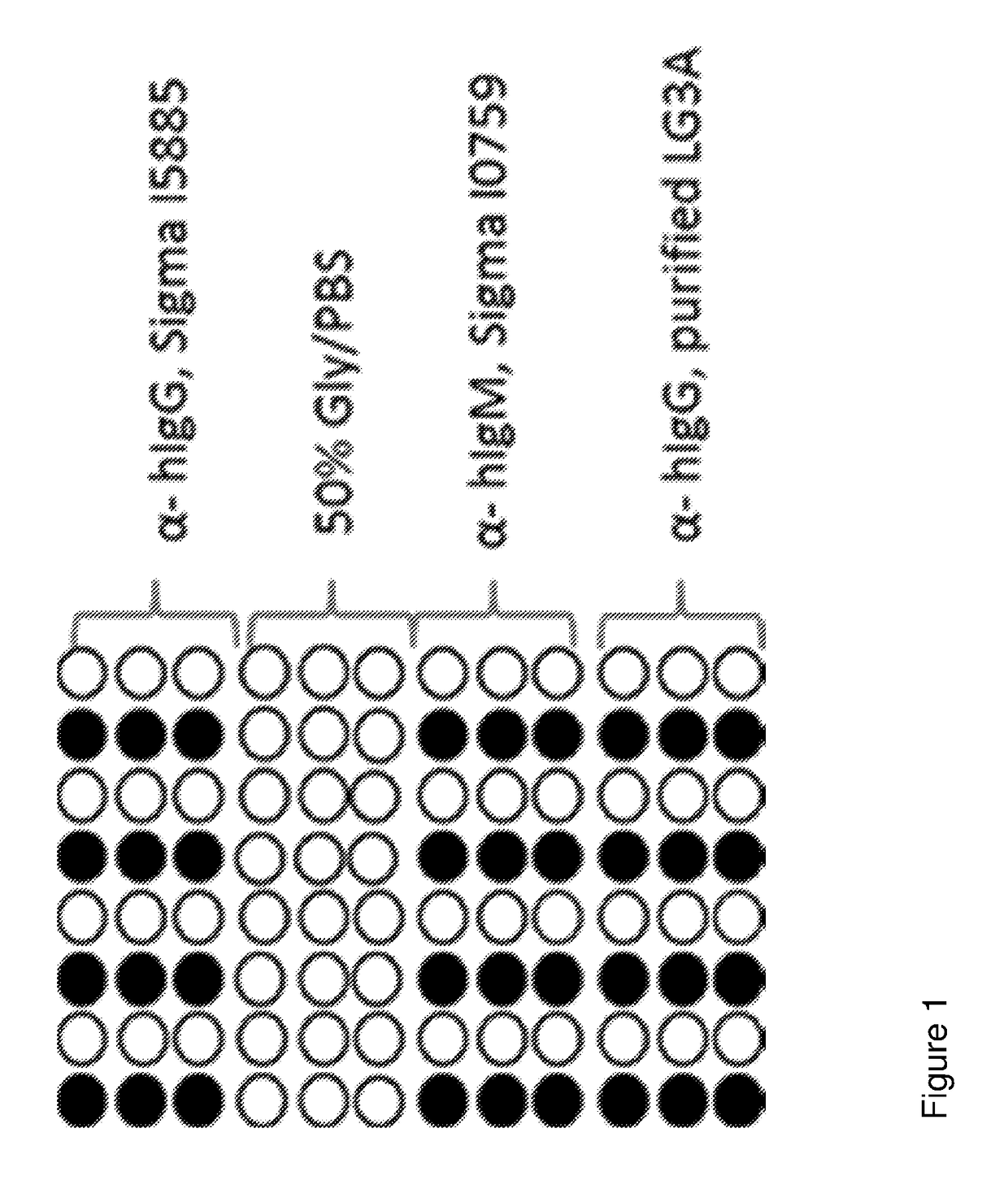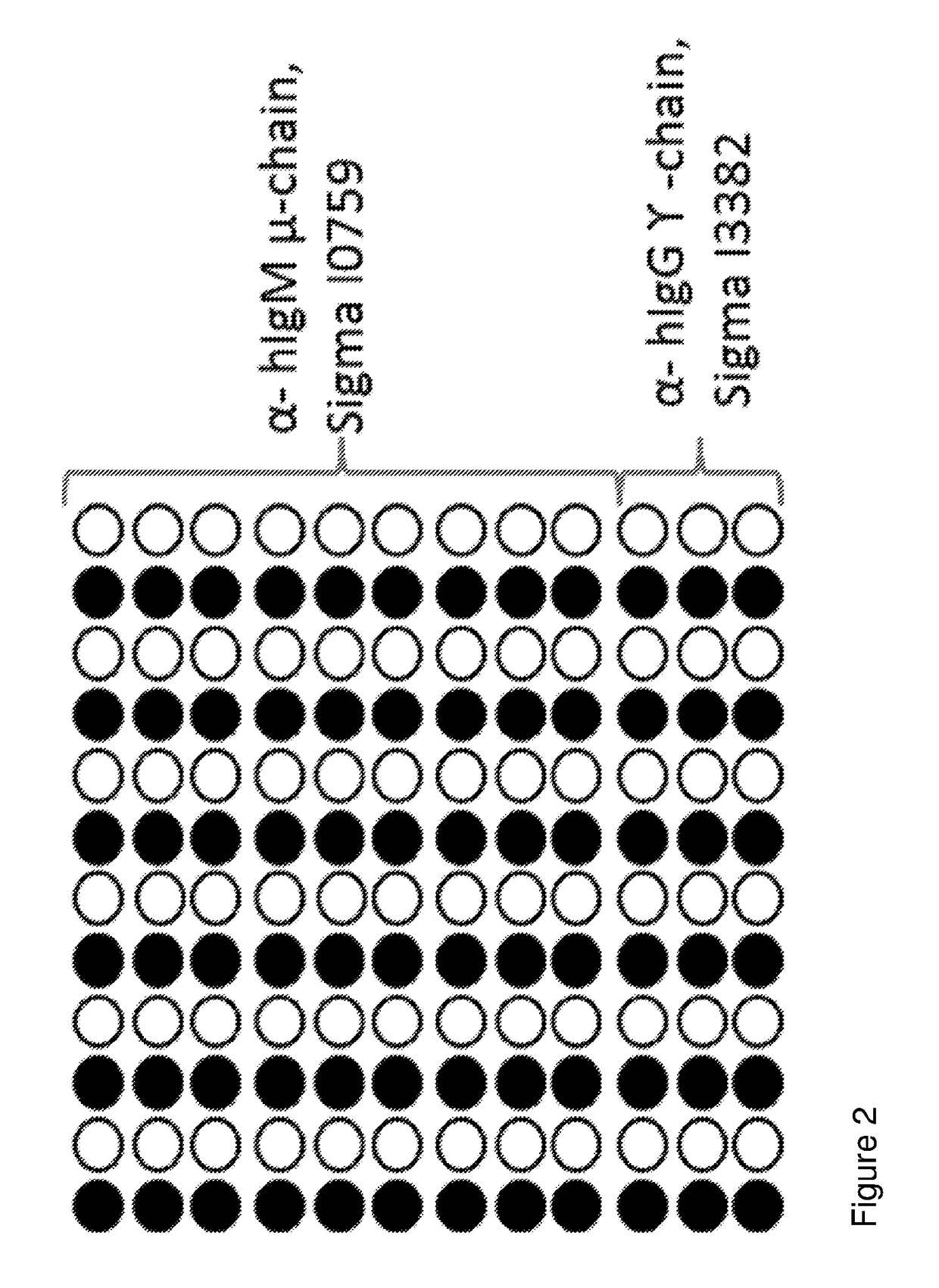Crossmatching blood samples
a blood sample and cross-matching technology, applied in the field of new antibodies, can solve the problems of incompatible blood, inability to transfusion, inability to detect antibodies,
- Summary
- Abstract
- Description
- Claims
- Application Information
AI Technical Summary
Benefits of technology
Problems solved by technology
Method used
Image
Examples
example 1
Preparation of Protein Microarrays
[0081]Coated slides obtained from Schott were used as the substrate. The binding agent antibody probe samples to be spotted were prepared in 50% Glycerol / 50% PBS.
[0082]The slides were printed using an Arrayjet Sprint Arrayer (Arrayjet) with a 12 sample Jetspyder. Replicates of each sample were printed on each slide separated by negative control spots of 50% glycerol / PBS—see FIG. 1. All slides were printed within a relative humidity between 40-60%, and at an ambient temperature (20-23° C.), Printed probes were left to immobilise in the humidified atmosphere for 30 minutes prior to being stored in a box at 2-8° C. in the dark for at least 24 hours.
[0083]Further arrays were printed for the testing of anti-A and anti-B plasmas which are shown in FIG. 2.
example 2
Washing of Cells Prior to Use in Experiments
[0084]All cell types were suspended in LISS or washed into LISS (low ionic strength saline)—other diluents may be used, including, for example PBS, Modified Alsevers, and variations thereof. Moreoever, cells need not be washed—rather a small volume of cells may be removed from the donor sample (which has perhaps been centrifuged) directly into LISS buffer. Where washing was used, cells were centrifuged three times at 3000 rpm for 2 minutes using a Thermo Centra CL2 centrifuge with the supernatant removed each time and replaced with ˜4 mL PBS. After the final centrifugation, one wash in LISS was performed before re-suspending the cells to 2% HCT in LISS.
[0085]For experiments where different haematocrits of cells were detected, cells were prepared at 8% HCT (160 μL of the resultant cell pellet was added to 1000 μL of LISS). The 8% HCT cells were then diluted further in LISS to achieve the required percentage haematocrit.
example 3
Indirect Agglutination Testing of Sensitised Cells (Conventional Method, Reference Technique)
[0086]Volumes (40 μL or 80 μL) of the cell suspension were incubated with 80 μL of neat or diluted plasma in a tube. The resulting mix was incubated in a water bath at 37° C. In this example, the mix was incubated for 30 or 45 minutes but shorter or longer times could be used. Under these conditions, the red blood cells are sensitised. Where plasma was diluted, the diluent may be the same as that used for the red cells suspension—other suitable diluents can be used.
[0087]Following the incubation period, cells were washed using the nW program on a DiaCent 2000 Cell washer (×4 washes with PBS, then centrifugation at 1000 g). Two drops of AHG were added and the tubes were finally centrifuged (1000 g, 10 secs) and agglutination of cells read over a light box.
PUM
 Login to View More
Login to View More Abstract
Description
Claims
Application Information
 Login to View More
Login to View More - R&D
- Intellectual Property
- Life Sciences
- Materials
- Tech Scout
- Unparalleled Data Quality
- Higher Quality Content
- 60% Fewer Hallucinations
Browse by: Latest US Patents, China's latest patents, Technical Efficacy Thesaurus, Application Domain, Technology Topic, Popular Technical Reports.
© 2025 PatSnap. All rights reserved.Legal|Privacy policy|Modern Slavery Act Transparency Statement|Sitemap|About US| Contact US: help@patsnap.com



